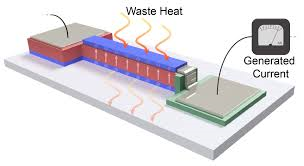
Breaking News
 Lumber Prices Are Flashing a Warning Sign for the U.S. Economy
Lumber Prices Are Flashing a Warning Sign for the U.S. Economy
 The Cost Of Living The American Dream For A Lifetime Has Reached A Whopping 5 Million Dollars
The Cost Of Living The American Dream For A Lifetime Has Reached A Whopping 5 Million Dollars
 Reverse Erectile Dysfunction FAST (Without Viagra)
Reverse Erectile Dysfunction FAST (Without Viagra)
 Who's Buying Up America's Farmland? The Land Grab You Need to Know About
Who's Buying Up America's Farmland? The Land Grab You Need to Know About
Top Tech News
 Methylene chloride (CH2Cl?) and acetone (C?H?O) create a powerful paint remover...
Methylene chloride (CH2Cl?) and acetone (C?H?O) create a powerful paint remover...
 Engineer Builds His Own X-Ray After Hospital Charges Him $69K
Engineer Builds His Own X-Ray After Hospital Charges Him $69K
 Researchers create 2D nanomaterials with up to nine metals for extreme conditions
Researchers create 2D nanomaterials with up to nine metals for extreme conditions
 The Evolution of Electric Motors: From Bulky to Lightweight, Efficient Powerhouses
The Evolution of Electric Motors: From Bulky to Lightweight, Efficient Powerhouses
 3D-Printing 'Glue Gun' Can Repair Bone Fractures During Surgery Filling-in the Gaps Around..
3D-Printing 'Glue Gun' Can Repair Bone Fractures During Surgery Filling-in the Gaps Around..
 Kevlar-like EV battery material dissolves after use to recycle itself
Kevlar-like EV battery material dissolves after use to recycle itself
 Laser connects plane and satellite in breakthrough air-to-space link
Laser connects plane and satellite in breakthrough air-to-space link
 Lucid Motors' World-Leading Electric Powertrain Breakdown with Emad Dlala and Eric Bach
Lucid Motors' World-Leading Electric Powertrain Breakdown with Emad Dlala and Eric Bach
 Murder, UFOs & Antigravity Tech -- What's Really Happening at Huntsville, Alabama's Space Po
Murder, UFOs & Antigravity Tech -- What's Really Happening at Huntsville, Alabama's Space Po
Thin film converts low grade waste heat to electricity at 19% of carnot efficiency

Much of that heat is less than 100 degrees Celsius and emanates from things like computers, cars or large industrial processes. Engineers at the University of California, Berkeley, have developed a thin-film system that can be applied to sources of waste heat like these to produce energy at levels unprecedented for this kind of technology.
This study reports new records for pyroelectric energy conversion energy density (1.06 Joules per cubic centimeter), power density (526 Watts per cubic centimeter) and efficiency (19 percent of Carnot efficiency, which is the standard unit of measurement for the efficiency of a heat engine).
The thin-film system uses a process called pyroelectric energy conversion, which the engineers' new study demonstrates is well suited for tapping into waste-heat energy supplies below 100 degrees Celsius, called low-quality waste heat.

 Tiny briefcase engine boosts EV range beyond battery power
Tiny briefcase engine boosts EV range beyond battery power 

